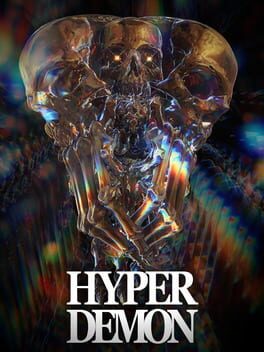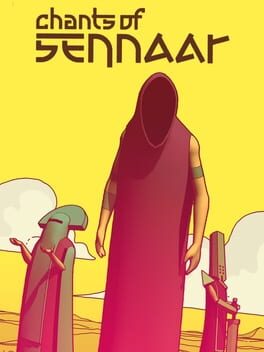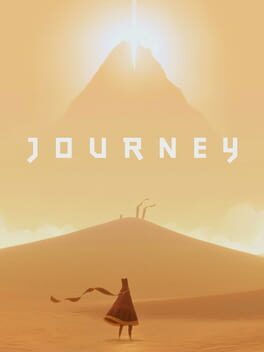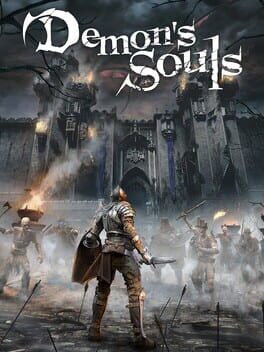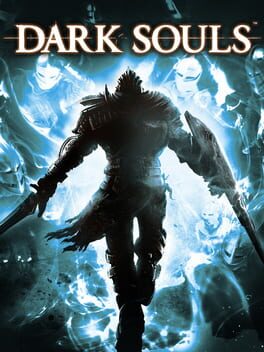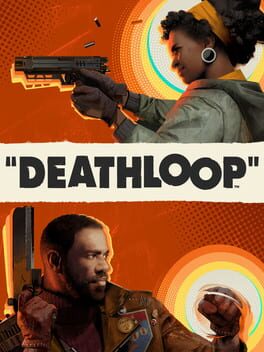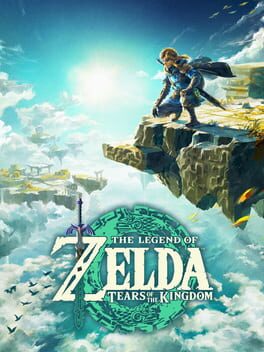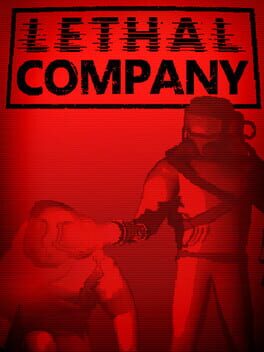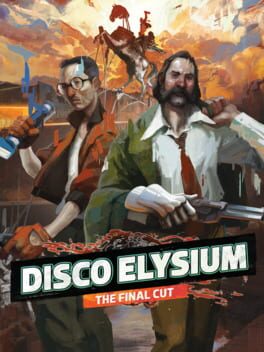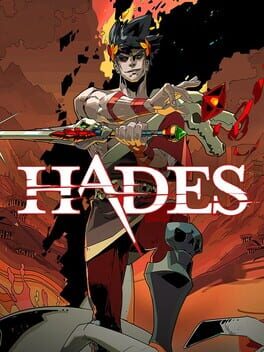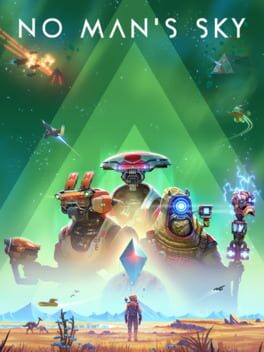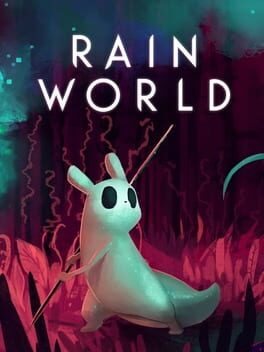sadurrasti
2022
I love hyper demon (HD). It improved upon the core appeal of devil daggers (DD) while fixing some of its biggest flaws. I believe it's one of the best spiritual sequels ever made (in the ballpark of DOOM, Dark Souls, and Bayonetta).
I saw the following one sentence 1.5 star review on here recently:
"Hey remember when the first game didn't need pages and pages of tutorials"
This review is funny to me because it isolates one of the biggest flaws of DD but touts it as something essential. DD didn't have a tutorials menu. But what is a tutorial? Is it just something the game labels as 'tutorial'? Must a tutorial be separate from the game proper? I don't think so; I argue that DD's first few minutes serves as enemy tutoriaIs in all except name. Among many other changes that improve replayability, HD extracts and largely removes these enemy tutorials. I only played each of the tutorials in HD once. However, because they are inextricably baked into DD, I played each of the enemy tutorials in DD hundreds of times. Am I supposed to believe this is a good thing?
It is common now for people (including the 1.5 star reviewer above) to believe that the 'correct' way to design games is to have seamless, built-in 'tutorials' that show the player how to interact with something rather than telling them. Ideally, these don't bring attention to themselves and are thus not labeled by the game as tutorials. It works great for many games, but DD->HD highlights a way in which a more 'traditional' approach to tutorials can be better for replayability. It's difficult to hide/obscure a tutorial and also make it optional because an unknowing/first-time player won't know not to skip it. This means that hidden tutorials are often mandatory, ensuring that experienced players still have to go through the tutorial even though they won't gain anything from it. DD has an extreme version of this, in my view. Sorath (DD/HD dev) recognized this, removed the tutorials and made them optional. In doing so, they had to reveal the tutorials as what they are which is maybe not ideal but, in my opinion, is completely worth it for the boost to replayability of HD over DD. You only live for a limited amount of time, please don't spend it replaying tutorials.
I saw the following one sentence 1.5 star review on here recently:
"Hey remember when the first game didn't need pages and pages of tutorials"
This review is funny to me because it isolates one of the biggest flaws of DD but touts it as something essential. DD didn't have a tutorials menu. But what is a tutorial? Is it just something the game labels as 'tutorial'? Must a tutorial be separate from the game proper? I don't think so; I argue that DD's first few minutes serves as enemy tutoriaIs in all except name. Among many other changes that improve replayability, HD extracts and largely removes these enemy tutorials. I only played each of the tutorials in HD once. However, because they are inextricably baked into DD, I played each of the enemy tutorials in DD hundreds of times. Am I supposed to believe this is a good thing?
It is common now for people (including the 1.5 star reviewer above) to believe that the 'correct' way to design games is to have seamless, built-in 'tutorials' that show the player how to interact with something rather than telling them. Ideally, these don't bring attention to themselves and are thus not labeled by the game as tutorials. It works great for many games, but DD->HD highlights a way in which a more 'traditional' approach to tutorials can be better for replayability. It's difficult to hide/obscure a tutorial and also make it optional because an unknowing/first-time player won't know not to skip it. This means that hidden tutorials are often mandatory, ensuring that experienced players still have to go through the tutorial even though they won't gain anything from it. DD has an extreme version of this, in my view. Sorath (DD/HD dev) recognized this, removed the tutorials and made them optional. In doing so, they had to reveal the tutorials as what they are which is maybe not ideal but, in my opinion, is completely worth it for the boost to replayability of HD over DD. You only live for a limited amount of time, please don't spend it replaying tutorials.
2024
In addition to the mechanics, presentation, and QOL features copied directly from P5(R), the tone of P3R is also nearly identical to P5(R). This is a problem because the story of P3 really lends itself to a darker, more melancholic tone. Just watch the opening cutscenes from each game back to back. (P3 , P3R). The original opening scene is so much darker and tense. Why is Yukari talking so much in the new one? It doesn't work for me and many of the changes are like this.
P3R is essentially P5(R) DLC (credit @mikesinouye). Folks from ATLUS gave an interview about how careful they were to not change too much, but playing the game makes me laugh at this. Like they changed nearly everything mechanically to be like P5(R), even in cases where it doesn't make sense. The example in the article of what they preserved is keeping cell phones the same lmao. It's just silly.
Some of the changes are good and the game is good overall. But by mashing together the gameplay/tone of P5(R) with the story and setting of P3, the result is worse than the sum of their parts.
Also, 'So dance, while I put you in a trance' with that fucked up vocal performance is actually absurdly good. And 'So dance if you want, go ahead / Free to do whatever, I'm chilling on my bed' in monotone mumble rap is trash and makes me cringe every time I hear it.
P3R is essentially P5(R) DLC (credit @mikesinouye). Folks from ATLUS gave an interview about how careful they were to not change too much, but playing the game makes me laugh at this. Like they changed nearly everything mechanically to be like P5(R), even in cases where it doesn't make sense. The example in the article of what they preserved is keeping cell phones the same lmao. It's just silly.
Some of the changes are good and the game is good overall. But by mashing together the gameplay/tone of P5(R) with the story and setting of P3, the result is worse than the sum of their parts.
Also, 'So dance, while I put you in a trance' with that fucked up vocal performance is actually absurdly good. And 'So dance if you want, go ahead / Free to do whatever, I'm chilling on my bed' in monotone mumble rap is trash and makes me cringe every time I hear it.
2023
Had high hopes for Chants of Sennaar (CoS) due to its similarities to other games I like but almost everything it attempts to do is done far better by said games.
The translation puzzles are most mechanically similar to Case of the Golden Idol (CGI) and Return of the Obra Dinn (ROD). In each of these games, you are presented with evidence and must make logical guesses to identify people/places/things/words. The way guesses are validated in CoS is essentially the same as ROD/CGI: If you have enough items correctly labeled, then the game just outright verifies your labels. However, in contrast to ROD/CGI, the puzzles in CoS take hours to ramp up in difficulty and no puzzle is ever as difficult or as satisfying as those of CGI or ROD. Further, CoS has much more 'downtime' than CGI/ROD. I think this helps CoS to mask just how simple the puzzles are. Whenever I was stuck, it wasn't because a translation puzzle was tripping me up, it was because I didn't interact with everything in the rooms available to me. This meant that I spent a lot of time just wandering each of the rooms making sure I had interacted with everything. It is quite disappointing since the game could have explored strange language structure in much greater depth, but instead everything is kept very simple. Ultimately, I think the game fails to capture the highs of CGI or ROD while not really offering anything else mechanically interesting.
CoS is, in my estimation, obviously inspired by Journey both for its aesthetics and story. That said, Journey and CoS are opposites when it comes to language. CoS is largely focused on language while Journey is devoid of it. Perhaps this is why Journey is forced to communicate its story in a much more compelling way. Even though you discover the meaning behind each symbol throughout a playthrough, ultimately, the story is still delivered through english written by the developers. The story could have been more interesting if the labels written by the player weren't validated and overwritten by those of the devs. Each player's interpretation of the story would have been a bit different this way, and it would have made me much more engaged to understand the story. As it is now, the story is very similar to any other text-based game. By the end of CoS, I felt unmoved by its story/themes.
Taking inspiration from great works can backfire; nothing in CoS is better than the sum of its individual, heavily inspired parts. Further, these parts are better realized in their original forms (namely from CGI, ROD, and Journey). All of this makes Chants of Sennaar difficult to recommend.
The translation puzzles are most mechanically similar to Case of the Golden Idol (CGI) and Return of the Obra Dinn (ROD). In each of these games, you are presented with evidence and must make logical guesses to identify people/places/things/words. The way guesses are validated in CoS is essentially the same as ROD/CGI: If you have enough items correctly labeled, then the game just outright verifies your labels. However, in contrast to ROD/CGI, the puzzles in CoS take hours to ramp up in difficulty and no puzzle is ever as difficult or as satisfying as those of CGI or ROD. Further, CoS has much more 'downtime' than CGI/ROD. I think this helps CoS to mask just how simple the puzzles are. Whenever I was stuck, it wasn't because a translation puzzle was tripping me up, it was because I didn't interact with everything in the rooms available to me. This meant that I spent a lot of time just wandering each of the rooms making sure I had interacted with everything. It is quite disappointing since the game could have explored strange language structure in much greater depth, but instead everything is kept very simple. Ultimately, I think the game fails to capture the highs of CGI or ROD while not really offering anything else mechanically interesting.
CoS is, in my estimation, obviously inspired by Journey both for its aesthetics and story. That said, Journey and CoS are opposites when it comes to language. CoS is largely focused on language while Journey is devoid of it. Perhaps this is why Journey is forced to communicate its story in a much more compelling way. Even though you discover the meaning behind each symbol throughout a playthrough, ultimately, the story is still delivered through english written by the developers. The story could have been more interesting if the labels written by the player weren't validated and overwritten by those of the devs. Each player's interpretation of the story would have been a bit different this way, and it would have made me much more engaged to understand the story. As it is now, the story is very similar to any other text-based game. By the end of CoS, I felt unmoved by its story/themes.
Taking inspiration from great works can backfire; nothing in CoS is better than the sum of its individual, heavily inspired parts. Further, these parts are better realized in their original forms (namely from CGI, ROD, and Journey). All of this makes Chants of Sennaar difficult to recommend.
2012
2020
Heartbreaking that this extinguished any possibility of an official port / faithful remaster, so demon's souls will always be stranded on PS3. I really have no understanding of people who think demon's souls needed a graphical overhaul. The real issue is that going forward people who want to play this game will be all but forced to play a version with some other teams changes all over it. No other medium entertains this. Games shouldn't either.
2011
2021
"DEATHLOOP" is to Dishonored what Prey: Mooncrash is to Prey. Like Dishonored, "DEATHLOOP" levels are discrete sections that are patrolled by mostly the same enemies that don't provide much resistance if you're willing to sneak and kill quietly. The slabs worth using in "DEATHLOOP" are ripped directly from Dishonored. Further, in both games, each level is typically centered around finding one person and taking them out. I don't love the style of gameplay that Dishonored primarily offers. Nothing prevents me from savescuming my way through encounters to get the perfect run I am after. In Dishonored, overt combat is not fun, so anytime I broke stealth I'd just reset. Some people love this; I don't.
I prefer Prey over Dishonored because there are so many more creative or satisfying ways of dealing with enemies. This is due to many factors, one being the increased enemy variety means they have different weaknesses to exploit. More generally, the mechanics and environments lend themselves better to creative expression. If stealth breaks or if I don't want to be stealthy, I have options to make it through the section in a satisfying way.
I won't go further on base Prey, but what Arkane did with Mooncrash is mix in roguelike elements and different characters to encourage different playstyles even further. The potential upside of bringing this to a Dishonored style game is that it could do the same, making each attempt at a level fresh and encouraging creative gameplay. Unfortunately, Dishonored/"DEATHLOOP" really does not have the depth of gameplay where vastly different playstyles are fun to explore. Further, the permanent progression in "DEATHLOOP" meant that I never had to change my loadout once I had played for a few hours. Because the game uses a soulslike XP/progression system, where the currency you use to upgrade (residuum) is lost upon death, the rewards for progression needed to be meaty for the player to feel any stress around death like a true soulslike. This is a way in which "DEATHLOOP" uses a trendy mechanic that doesn't really mesh well with the rest of the game.
Another mechanic lifted straight from souls is invasion. I do feel this works much better as a way to spice up the otherwise repetitive levels, but this only worked for a few key hours in the middle of the game where I wanted to keep residuum for upgrades. Once my loadout was already overpowered, I didn't really care if Julianna invaded because I was just trying to finish the visionary quests which mostly didn't require you to get back to the tunnels alive; it was sufficient to make it to the quest marker and read whatever clue the game wanted me to. After that, Julianna could kill me and it didn't hamper my progress. The game suffers from lack of difficulty after the first few hours because progression is only player sided--the game never does anything to ramp up the difficulty of the levels you explore. In some ways, this game feels like "game-awards-bait" because it is easy enough for game critics to enjoy and it is littered with popular mechanics that game critics love to talk about because some asshole wrote a video essay on it. I've listed a few below:
-Demon's Souls style invasion.
-Demon's Souls style XP drop on death that you need to physically go pick up.
-Demon's Souls diagetic death and progression.
-Main character can't remember anything like Disco Elysium. ("ludonarrative resonance" lol)
-Roguelike with meta progression like Hades / Rogue legacy.
-Timeloops like Outer Wilds.
The problem is that every game example I've listed here uses the particular mechanic/design choice far better than "DEATHLOOP".
This review is quite negative so far; why is my score not lower? First, the conceit of looping over the same day does work fairly well with a Dishonored style game. Most importantly, it removes savescumming and, in the early hours, did encourage experimentation. Further, the visual style, the sound design, the music, and the voice acting is all superb. I think the writing could have been fleshed out a bit more but I like the world and the characters are interesting and distinct. It is really a shame that the artists, sound designers, and voice cast do not have their work attached to a better game. Also, I do feel that in some ways this game is charmingly ambitious. It is certainly much more risky in terms of it's mechanics than most high budget projects sheerly for the breadth of what they tried to do. I appreciate that, and I did somewhat enjoy my time with the game. It's a shame it wasn't more.
I prefer Prey over Dishonored because there are so many more creative or satisfying ways of dealing with enemies. This is due to many factors, one being the increased enemy variety means they have different weaknesses to exploit. More generally, the mechanics and environments lend themselves better to creative expression. If stealth breaks or if I don't want to be stealthy, I have options to make it through the section in a satisfying way.
I won't go further on base Prey, but what Arkane did with Mooncrash is mix in roguelike elements and different characters to encourage different playstyles even further. The potential upside of bringing this to a Dishonored style game is that it could do the same, making each attempt at a level fresh and encouraging creative gameplay. Unfortunately, Dishonored/"DEATHLOOP" really does not have the depth of gameplay where vastly different playstyles are fun to explore. Further, the permanent progression in "DEATHLOOP" meant that I never had to change my loadout once I had played for a few hours. Because the game uses a soulslike XP/progression system, where the currency you use to upgrade (residuum) is lost upon death, the rewards for progression needed to be meaty for the player to feel any stress around death like a true soulslike. This is a way in which "DEATHLOOP" uses a trendy mechanic that doesn't really mesh well with the rest of the game.
Another mechanic lifted straight from souls is invasion. I do feel this works much better as a way to spice up the otherwise repetitive levels, but this only worked for a few key hours in the middle of the game where I wanted to keep residuum for upgrades. Once my loadout was already overpowered, I didn't really care if Julianna invaded because I was just trying to finish the visionary quests which mostly didn't require you to get back to the tunnels alive; it was sufficient to make it to the quest marker and read whatever clue the game wanted me to. After that, Julianna could kill me and it didn't hamper my progress. The game suffers from lack of difficulty after the first few hours because progression is only player sided--the game never does anything to ramp up the difficulty of the levels you explore. In some ways, this game feels like "game-awards-bait" because it is easy enough for game critics to enjoy and it is littered with popular mechanics that game critics love to talk about because some asshole wrote a video essay on it. I've listed a few below:
-Demon's Souls style invasion.
-Demon's Souls style XP drop on death that you need to physically go pick up.
-Demon's Souls diagetic death and progression.
-Main character can't remember anything like Disco Elysium. ("ludonarrative resonance" lol)
-Roguelike with meta progression like Hades / Rogue legacy.
-Timeloops like Outer Wilds.
The problem is that every game example I've listed here uses the particular mechanic/design choice far better than "DEATHLOOP".
This review is quite negative so far; why is my score not lower? First, the conceit of looping over the same day does work fairly well with a Dishonored style game. Most importantly, it removes savescumming and, in the early hours, did encourage experimentation. Further, the visual style, the sound design, the music, and the voice acting is all superb. I think the writing could have been fleshed out a bit more but I like the world and the characters are interesting and distinct. It is really a shame that the artists, sound designers, and voice cast do not have their work attached to a better game. Also, I do feel that in some ways this game is charmingly ambitious. It is certainly much more risky in terms of it's mechanics than most high budget projects sheerly for the breadth of what they tried to do. I appreciate that, and I did somewhat enjoy my time with the game. It's a shame it wasn't more.
2023
2014
2018
2016
2017
2018
